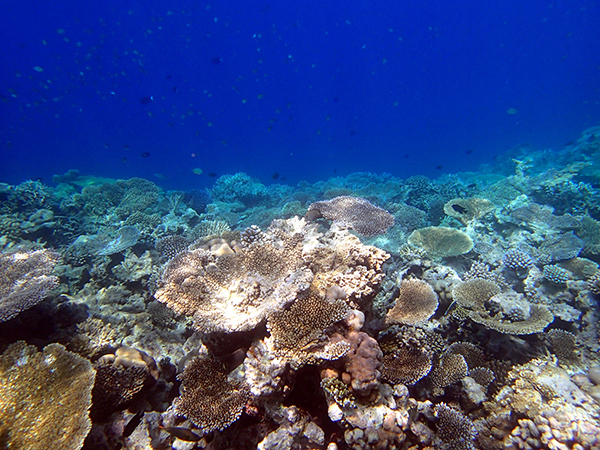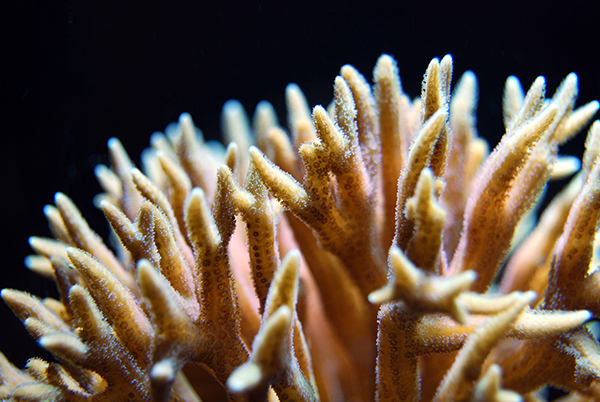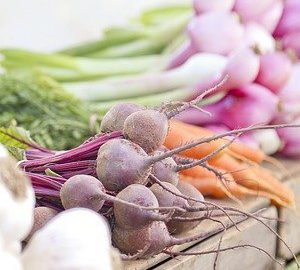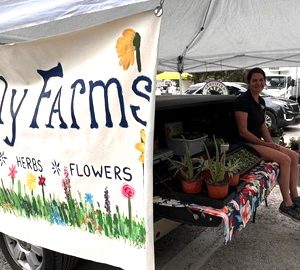Did you know that Coral is, in fact, an animal that has evolved to incorporate a garden in its own tissue?

Coral doesn’t eat the plant– it simply protects it, feeds it and benefits from the products of photosynthesis necessary for its survival. Approximately 200 million years of symbiosis have produced a relationship so cohesive, the plant and animal are literally one. They do not start out together, but are so dependent on each other, they cannot survive alone.
Although they look like exotic plants, coral are marine animals that are sessile or stuck in one spot. They cannot make their own food, so they filter microorganisms living in tropical waters for nourishment. They are able to discern algae from zooplankton (microscopic animals). Coral consume the zooplankton, but absorb the algae into their tissue, where it replicates with cell division, creating an internal garden.

To supplement their diet, coral have a special “agreement” with their garden.
They have been farming a marine algae called zooxanthellae for over 200 million years that has become such a key part of their existence that it actually lives inside of their tissue. The animal provides carbon dioxide and fertilizes the plant with waste, and the plant receives protection inside the coral. In return, the plant gives the coral products of photosynthesis such as oxygen, glucose and amino acids. They uses these products to make proteins, fats and carbohydrates. These nutrients facilitate the production of calcium carbonate, which is its familiar hard coating. The “algae garden” also gives the coral its color.
The ocean regulates its own salinity and temperatures in areas to maintain integral ecosystems. In the case of shallow tropical waters where there is a photic zone (light penetrating to the bottom of the sea floor), consistent temperature and salinity allow coral to live in a predictable environment where their “algae gardens” thrive. A rise in temperature of 1-2° Celsius (33-35°F) for five to 10 weeks or a decline in temperature of 3-5° Celsius (37-41°F) for five to 10 days has resulted in coral bleaching events.
When a coral bleaches, it indicates the zooxanthella (good algae) has died and been expelled.
It is still alive, but will not have the nutrients it needs to survive. It will succumb to the environment, and its white tissue will begin to slough off. When the coral is dead, it will turn dark in color as opportunistic algae engulf its skeleton.
As part of a natural process, the ocean absorbs carbon dioxide from the earth’s atmosphere. However, too much carbon dioxide can change the chemistry of the water, making it more acidic, which is harmful to the coral reef. Global warming indicates that there is too much carbon dioxide in the atmosphere, forming a barrier for heat, creating a Greenhouse Effect. Trapped heat slowly warms the environment, including the ocean.
We are all affected by the health of the coral reef. To learn more, search “Chasing Coral” on Netflix and watch this comprehensive documentary.
Side note:
If you have been on my tour, you know why the water in the Lowcountry waterway is green. It is the refraction of light reflecting a green wavelength when encountering millions of microorganisms such as larval fish, crab, shrimp, oysters, etc. Our saltmarsh estuary is the most prolific on the Eastern seaboard. Our water is too full of life for sunlight to penetrate. Therefore, plants and hard coral can’t grow on the bottom of the waterway. Tropical waters have significantly less larval concentration (nutrient poor). Therefore, the coral has devised a way to produce the extra nutrients that it needs with the incorporation of algae.
Amber Kuehn is known as the “Turtle Lady” and manages the Hilton Head Island Sea Turtle Protection Project. She also leads “Voyages of Discovery” aboard Spartina Marine Education Charters.



